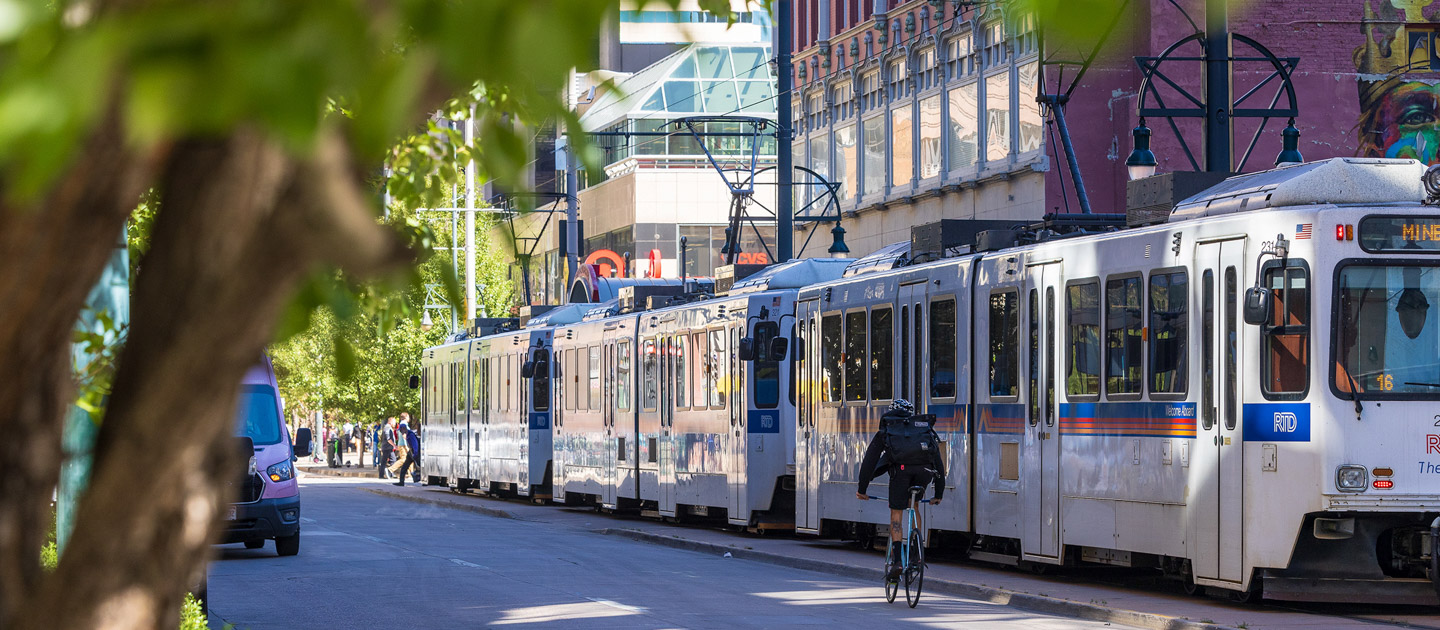
Accessible Light Rail Vehicles
All rail vehicles are accessible to riders with mobility devices and have designated seating areas available for riders with mobility devices. Light rail vehicles are mobility device and wheelchair accessible. Ramps are located at each station. Wait at the top of the ramp for the lead train car to stop and the operator will help you board and exit the lead train car.
The designated mobility device/wheelchair area is the best place for a rider using a mobility device while on light rail vehicles. Securement is not required or assisted.
In addition to helping board/de-board riders with mobility devices, train operators also assist with arranging other passengers, able-bodied and others using mobility devices, when designated mobility device/wheelchair areas are in use from other riders. Light rail train operators generally only assist riders who are loading/exiting the lead train car. Learn how to ride rail.
FAQs
Will the Light Rail operator clear an accessible seat for me?
Yes, the operator will assist with boarding/exiting the lead train car and will request other passengers move to make an accessible seat or area available for you.
What if the designated mobility device area is full?
If the mobility device/wheelchair area is full with other passengers using mobility aids the light rail train operator will ask the current passengers in the designated seating area if they can move to make room for a passenger. If this is not possible, the train operator will inform the waiting passenger, advise the waiting passenger of the next train arriving, and will contact dispatch control to alert of the situation.
RTD provides additional space to accommodate wheelchairs and mobility aids within normal areas used by standees. The operator may offer use of this space.
What if a passenger refuses to move from the mobility device area?
RTD provides additional space to accommodate wheelchairs and mobility aids within normal areas used by standees. The operator may offer use of this space.
If an individual in the designated mobility device/wheelchair area does not move at the train operator’s request, the operator will contact dispatch alerting the situation. A waiting passenger may be asked to wait for the next arriving train.
What rules do people with strollers and large items need to follow?
Passengers may board with large items and strollers on any vehicle, provided the passenger can lift the item on board. Large items should not block access to the mobility device/wheelchair area or priority seating, prohibit movement of passengers, or block doors.
When a passenger with a large item or stroller boards the lead train at the top of the platform, the operator will advise the passenger upon boarding to use seats or spaces for standees behind the mobility device/wheelchair areas and priority seating for themselves and their objects. Train operators will remind passengers that do sit in designated mobility device/wheelchair areas that they will need to move should a rider with a mobility device need to board the train.
What is the responsibility of the operator when dealing with strollers, large items, and mobility devices?
When a passenger with a large item or stroller boards the lead train at the top of the platform, the operator will advise the passenger upon boarding to use seats or spaces for standees behind the mobility device/wheelchair areas and priority seating for themselves and their objects. Train operators will remind passengers that do sit in designated mobility device/wheelchair areas that they will need to move should a rider with a mobility device need to board the train.
What does RTD consider to be a mobility device?
A “mobility aid” means a device, such as a wheelchair, scooter, or walker, designed for and used by an individual with a disability for the purpose of mobility, not for convenience only.
Light Rail High Block Access
The RTD Light Rail high block is a ramp structured for accessibility. The purpose of the high block is to create access to the train for people with mobility devices - mainly wheelchairs. High block use is also for individuals whose physical mobility impairment(s) make it difficult to use the stairs to access RTD’s light rail trains.
The high block is not required to accommodate devices that are not primarily designed or intended to assist persons with mobility disabilities. Devices such as bicycles, skateboards, shopping carts, two-wheeled scooters, luggage, strollers, etc., are not designed nor intended to be used as a mobility device based on a disability. Therefore, these types of items are not allowed on the RTD Light Rail high blocks. RTD Light Rail riders are also not allowed to use the high block for items they have difficulty getting on the train e.g. luggage, strollers, bikes, etc.
In order to maintain our accessibility features (Light Rail high block), and for riders' safety, RTD will take steps to ensure unobstructed access to the Light Rail high blocks for people with legitimate mobility devices and mobility impairments.